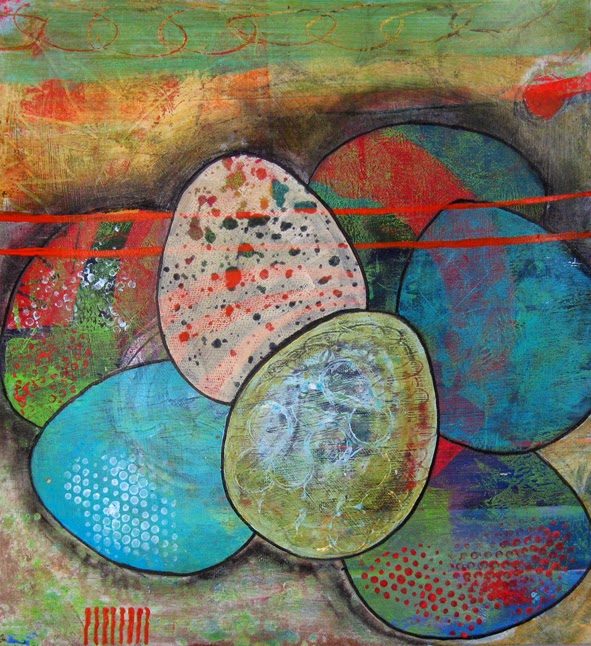Back in the studio it's slow going. After being away for a while teaching I usually feel a bit tentative coming back to the studio routine. Out of my groove, flailing around looking for something I don't know what. So I went back to these 20"x20" pieces I started in March, and worked on them a bit. I'm working on some 3'x3' canvases too, and smaller pieces I started during the workshops on Whidbey Island (see previous two posts).
 |
| One of the drawings started here. |
 |
| Several layers deep here, beginning to take shape |
 |
| This might be done, but I'm not sure.* |
 |
| I'm not sure where this started, but it is one of the drawings begun in March, which you can see here. I seem to be on a roll with these orb shapes. |
 |
| Or not. This got a makeover, or a fresh start, or a "monkey wrench" at this point. |
 |
| Back to the orbs I guess. Still in process. |
* I am often asked the question: How do you know when a piece is finished? There is a long answer, which I try to give at workshops. And as I give the long answer, I'm trying to find it for myself as well. It is not a neatly packaged answer, but involves tangents and detours. The short version is this: you know that a piece is finished when it isn't bugging you for more development. When the piece gives you that "a Ha" feeling, and there isn't one thing about it that is niggling at you, then it is done. When the conversation is over, your piece stops "talking" to you and stands on its own two feet.
If you don't know if it's finished, it is not finished. About my piece above, third image from the top, I say I'm not sure if it's finished. So it's not. It may only need to sit for a few days, at which time I may declare it finished. Or I may see what has to happen to move it forward. So, even if your piece does not need another mark, it isn't finished until it says it's finished.
The practice is not How-To-Finish-Your-Art in ten easy steps; and it isn't about going through a checklist of compositional principles (though that can be helpful if you don't know
what is bugging you about a piece). The practice is being honest with yourself (not rationalizing or explaining) and cultivating awareness of that gut feeling that tells you the piece speaks to you, expresses YOUR voice. Key word here is "cultivate". It's an ongoing practice; keep cultivating. Namaste.










































